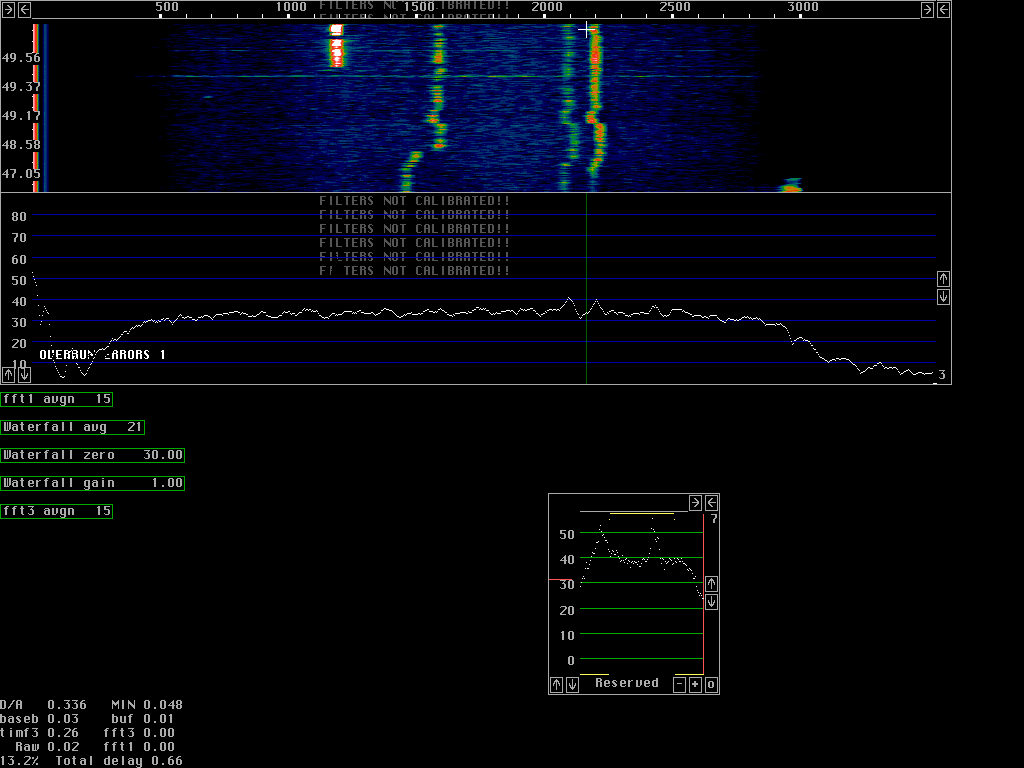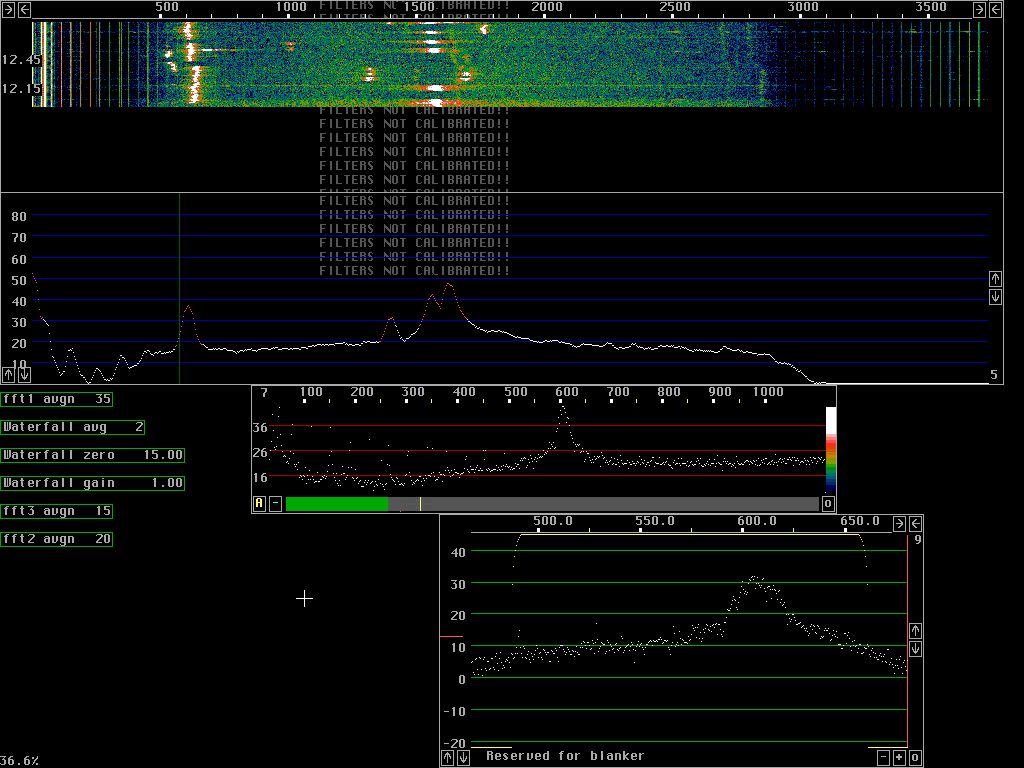Processing with conventional parametersThe Linux pc radio package can be used as an add on to a conventional radio for conventional filtering. The graphs of this were recorded with a uncalibrated system. Calibration improves as shown elsewhere but this page is intended to show what one gets directly.Fig.1. shows the screen with a small size for the baseband fft. Here the second fft is disabled. The total processing delay is about 0.5 seconds which is what one needs to make the steep skirts of the filter shown in the baseband graph. With the system set up like this one can use filter bandwidths down to about 15Hz. The processing uses 13% of the total available time for the Pentium 60MHz.
|

|
In fig.2 the baseband graph is increased and it is easily seen that the CW signal is about 50Hz wide while the spurs (overtones of 50 Hz) are very sharp. The reason for the relatively wide CW signal is the extremely poor frequency stability of the TS520. This radio can not be used to demonstrate finding of weak signals, keying sidebands etc.
|

|
The Pentium 60MHz is fast enough to run high performance processing
for SSB bandwidth.
With second fft enabled, noise blanker included and a resolution of
about 0.5Hz only about one third of the processing power is used.
|
